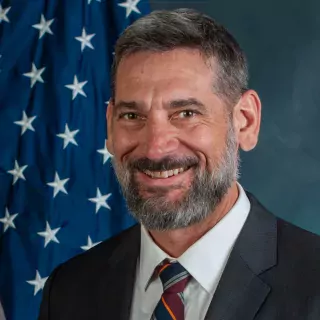Love is in the Air: A GAO Mixtape, Part 2
Today, we celebrate our love for you – and our work. Maybe you noticed this with our first Valentine’s Day mixtape last year? We Crush on providing you with objective, reliable information that helps the government save money and work better, Always and Forever. It’s just our way of showing you The Greatest Love of All: the love of accountability.
We Can’t Help Falling in Love with doing this work, so we made another Valentine’s Day mixtape to bring some more data Close to You. Press play and feel the romance of program auditing.
Love, like accessing high school courses to help prep for college, should be easy as A-B-C. But it turns out that students in smaller and poorer schools had less access to “the branches on the learning tree” including more advanced courses like calculus, physics, and courses that offer college credits to high school students. Officials we interviewed in high-poverty schools said their students can face numerous challenges in preparing for college. Some school officials we interviewed were taking steps to address these challenges, like offering free college courses.
Why do so many artists—from the Beatles to Jody Watley, from the Doobie Brothers to Mary J. Blige—sing about finding Real Love? Probably because we all share a desire for authenticity. Speaking of finding the genuine article: we found that counterfeit products can be hard to spot and may be offered online next to authentic goods. For example, manufacturers determined 20 of 47 items GAO purchased from third-party sellers on popular sites were counterfeit. We recommended that Customs and Border Protection improve evaluations of its efforts to stop imported counterfeit goods at the border and assess opportunities to enhance information sharing about seized goods with the private sector.
Lou Reed sang that his Satellite of Love had gone to Mars and was filled with “parkin’ cars”. While we haven’t studied autos in space, we do know that the Department of Defense spends billions of dollars a year on satellites that provide critical communications, reconnaissance, and other capabilities. We found that DOD may be able to save money and add capabilities faster by paying private companies to host government sensors or other equipment—called payloads—on their satellites. DOD estimates it has already saved hundreds of millions of dollars from this cost-sharing approach. We recommended that DOD gather data in a central location from its programs that use these commercially hosted payloads.
Looking For Love in all the wrong places? Or just Searchin’ for something in common with your crush? Like you, the National Nuclear Security Agency is trying to find certain things In Common among its contractors. NNSA started implementing a common financial reporting system for its contractors so it can better compare and manage contract costs. However, we found that this effort has not followed leading project management practices and made seven recommendations to address problems we found.
Valentine’s Day isn’t just for saying I’ll Be There For You to our significant others. It’s also the perfect occasion to tell our police officer and firefighter friends how much we heart them for being there for us every day, not just on February 14th.
But in what ways can the federal government be there for them? In our report, we talked about how vital communications are in emergencies and recommended that Homeland Security’s Office of Emergency Communications (now known as the Emergency Communications Division) make certain it can communicate quality information to all public-safety stakeholders, including our first responders.
Maybe someone’s Been Caught Stealing your heart with Just One Look. With Tax Day coming, we hope no fraudsters try to steal your ID, too. While the IRS kept $10.5 billion out of the hands of criminals using false identities to claim tax refunds in 2016, at least $1.6 billion was paid out to fraudsters. Among our 11 recommendations to IRS: prioritize its authentication initiatives; estimate the funding and other resources it will need to implement these initiatives; and develop a process to evaluate potential authentication technologies.
Foo Fighter Dave Grohl looked to the sky to save him when he wanted to Learn To Fly; but if you’re a pilot wanting to train in one of the Air Force’s 186 F-22s, you need a bit more than that. The small-but-mighty F-22 fleet is central to the Air Force’s ability to defeat increasingly capable and technologically advanced adversaries. However, we found that F-22 pilots have limited opportunities to train for air superiority missions in high threat environments (i.e., the ability to freely maneuver and take decisive action in highly contested spaces). We recommended that the Air Force identify ways to increase these opportunities so F-22 pilots can enhance their skills.
You’ve reached the last track on the mixtape. You can hit rewind or visit gao.gov to read more reports.
Comments on GAO’s WatchBlog? Contact blog@gao.gov.

















